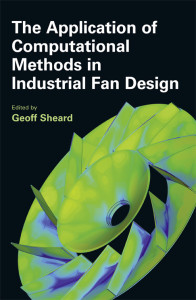 The Application of Computational Methods in Industrial Fan Design (2015)
The Application of Computational Methods in Industrial Fan Design (2015)
How do engineers learn to use new tools and techniques when superannuated ones are no longer adequate to meet future challenges? How can engineers adapt technology developed in a different industry and make it relevant to their own? The Application of Computational Methods in Industrial Fans answers these questions and more. The editor and authors provide real insight into the reality of what they needed to create and apply new knowledge into the most demanding applications.
“Europe is at Tier 2 of fan peak efficiency regulation, with a third tier under discussion. The American Department of Energy is evaluating design point efficiency minimums which restrict the operating range of all fans. China, Malaysia and Taiwan have rules in effect, while the rest of the world is considering alternatives. Manufacturers will respond, improving peak efficiency to remain on the market, and expanding their compliant range of operation. This edited volume shows how manufacturers can drive fan efficiency higher by integrating computational methods developed by the aerospace industry into their design process. It’s a “must study” for those who choose to remain competitive.”
Wade W. Smith, Executive Director, Air Movement & Control Association (AMCA)
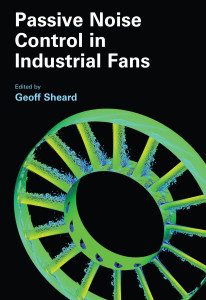 Passive Noise Control in Industrial Fans (2015)
Passive Noise Control in Industrial Fans (2015)
This edited volume of papers illustrates how in today’s environmentally aware marketplace fan efficiency and noise have become increasingly important. Historically, air movement fan manufacturers have competed on cost, with fan efficiency and noise as secondary considerations. This edited volume of papers shows how to make the quantum-leap in air movement fan technology to increase efficiency whilst simultaneously reducing noise. Passive Noise Control in Industrial Fans answers these questions and more. The editor and authors provide real insight into the reality of what they needed to create and apply new knowledge into the most demanding applications.
“Historically, air movement fan manufactures have competed on cost, with fan efficiency and noise as secondary considerations. In today’s environmentally aware market place fan efficiency and noise have become increasingly important. A quantum-leap in air movement fan technology is needed to increase efficiency whilst simultaneously reducing noise. This edited volume of papers illustrates how to make that leap.”
Mark Stevens, Technical Director, Air Movement and Control Association (AMCA)
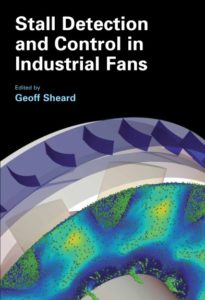 Stall Detection & Control in Industrial Fans
Stall Detection & Control in Industrial Fans
2014
How do engineers learn from in service failures, and perhaps more importantly, how can they avoid repeating the past mistakes of others? How can engineers apply what they have learnt following an in-service failure to the design of new products and systems that avoid previous design errors? Stall Detection and Control in Industrial Fans answers these questions and more. The editor and authors provide real insight into the reality of what they needed to create and apply new knowledge into the most demanding applications. Touted by many leaders, both domestically and internationally, this book will appeal to: corporate managers accountable for maintaining a technical lead over competitors; senior engineers who are trusted to lead research and development programs; junior engineers who wish to learn what it means to develop and apply new technology; those within the air movement and control community who wish to gain an insight into how new knowledge is created and put to work; those within the wider engineering community who wish to understand how to learn from inservice failures, to make their own response to a failure more effective; and, those within academia who wish to become more effective at not only creating new knowledge, but putting it to work.
“Like any other technology driven community the air movement and control community is under pressure to improve both its products and the systems into which they are installed. As we seek to improve we must also manage technical risk to avoid in-service failures. On occasions that in-service failure arises, we must learn from it. This unique edited volume of papers provides real insight into how we learn.”
Loïc Espiet, CEO, Nicotra-Gebhardt-CBI Group, Italy
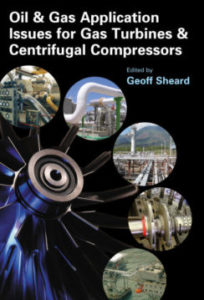 Oil & Gas Application Issues for Gas Turbines & Centrifugal Compressors
Oil & Gas Application Issues for Gas Turbines & Centrifugal Compressors
2013
How do engineers learn from their mistakes, and perhaps more importantly, how do they avoid repeating past mistakes of others? How do engineers move on from the re-design of gas turbine driven compression systems following an in-service failure to the design of new systems that avoid previous design errors? How can engineers systematically develop the necessary tools and techniques to ensure that new designs do not fail in-service? Oil & Gas Application Issues for Gas Turbines & Centrifugal Compressors identifies the design related errors associated with past in-service failures, and presents a suite of tools to assist the design engineer in avoiding them in future compression system designs. The editor, Geoff Sheard, and authors Klaus Brun and Rainer Kurz provide real insight into the reality of what engineers must do if they are to avoid repeating the design errors that have resulted in past in-service failures. Touted by many leaders, both domestically and internationally, this book will appeal to: *Corporate managers accountable for major pipeline projects. *Senior engineers who are trusted to deliver compression system designs that will go into, and operate reliably in-service. *Junior engineers who are tasked with the detail design of compression systems and their associated up and downstream pipework. *Those within the oil and gas community who wish to gain an insight into the design errors that have resulted in previous in-service compression system failures. *Those within the wider engineering community who wish to understand the challenges associated with the compression system design process.
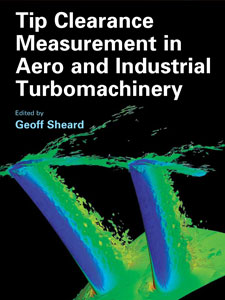 Tip Clearance Measurement in Aero & Industrial Turbomachinery
Tip Clearance Measurement in Aero & Industrial Turbomachinery
2011
How do engineers create new knowledge? Can engineers capture new knowledge, or in reality do they lose it almost as fast as it is created? How can engineers apply new knowledge in a way that really changes the industry within which they work? How do engineers move from research, to development to production? “Tip Clearance Measurement in Aero and Industrial Turbomachinery” answers these questions and more. The editor and authors provide real insight into the reality of what they needed to create and apply new knowledge into the most demanding applications. Touted by many leaders, both domestically and internationally, this book will appeal to: corporate managers accountable for maintaining a technical lead over competitors; senior engineers who are trusted to lead research and development programs; junior engineers who wish to learn what it means to develop and apply new technology; those within the turbomachinery community who wish to gain an insight into how new knowledge is created and put to work; those within the wider engineering community who wish to understand the product development process, to make their own development effort more effective; and, those within academia who wish to become more effective at not only creating new knowledge, but putting it to work.
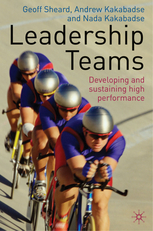 Leadership Teams: Developing & Sustaining High Performance
Leadership Teams: Developing & Sustaining High Performance
2009
Leadership Teams identifies six critical stages to developing high performing teams. The actions of effective leaders turning dysfunctional groups in to world class teams, are clearly identified. Being innovative, being decisive, managing conflict effectively, are all necessary attributes to having teams and individuals, fully engaged to realising the vision of the organization. The research behind Leadership Teams is extensive and is captured as a serialized case study. Based on a true life transformational experience, the case of the Traditional Turbine Company is interwoven into each chapter in order to capture the challenges and steps to take to have a group become a high performing team. The wisdom underlying this book is of great benefit for managers who are stretched by the scale and complexity of their organization but who are equally tasked to succeed, irrespective of their circumstances. Leadership Teams spells out what it takes to release the immense power from shared ways of working.

